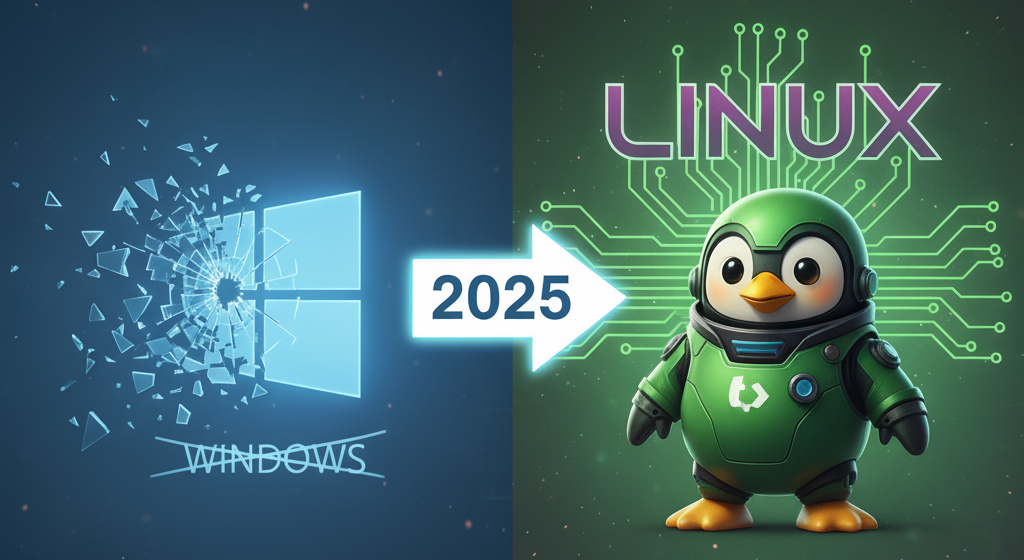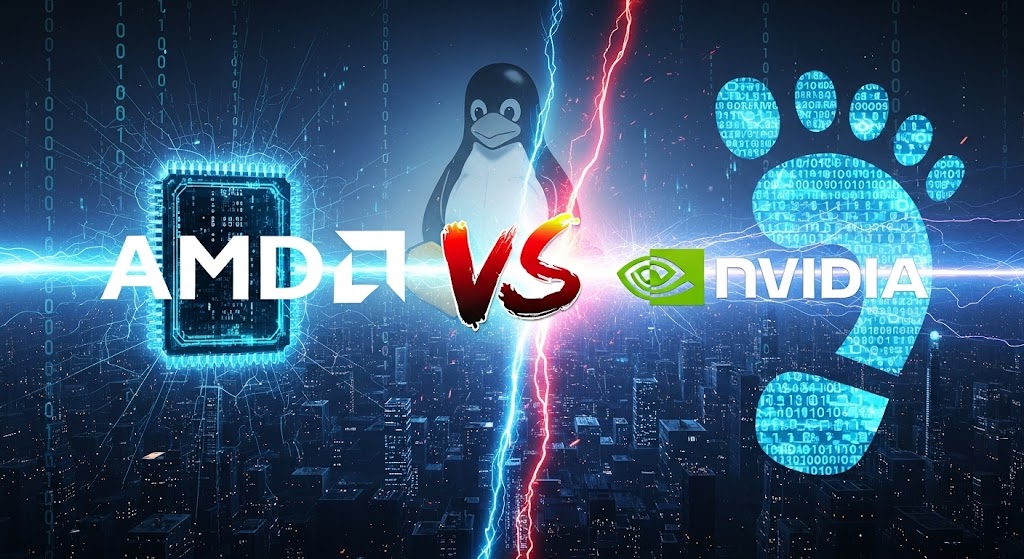Let’s get one thing straight right from the start. Choosing between SUSE and Red Hat isn’t like picking between Coke and Pepsi. This isn’t a simple taste test. It’s more like deciding between a meticulously engineered German touring sedan and a high-performance American muscle car. Both will get you down the road at incredible speed, but how they do it, the philosophy behind their design, and the type of journey they’re built for are worlds apart. For years, I’ve seen organizations make this multi-million dollar decision based on an outdated feature list or a salesperson’s pitch. That’s a mistake.
The question you should be asking isn’t just “Which is better, SUSE or Red Hat?” It’s “Which operating system’s philosophy aligns with my company’s entire IT strategy for the next decade?” Are you building a culture around infrastructure-as-code and cloud-native agility? Or do you prize rock-solid stability, operational simplicity, and deep integration with specific enterprise applications? The answer to that question will tell you more than any benchmark ever could.
This isn’t just another suse linux vs redhat linux comparison. We’re going to tear down these enterprise Linux titans, look at the bolts and welds of their architecture, and understand the strategic implications of their design choices. By the end, you’ll have a clear framework for deciding which of these platforms is the right tool for your enterprise job.
A Tale of Two Philosophies: Management and Automation
Nothing reveals the deep-seated philosophical differences between SUSE and Red Hat more than their approach to system management. This isn’t just about a GUI versus the command line; it’s a fundamental disagreement on how an administrator’s time should be spent and how systems should be managed at scale.
SUSE’s YaST: The Integrated Command Center
SUSE Linux Enterprise Server (SLES) is built around a concept that I can only describe as “integrated simplicity.” At the heart of this is YaST, the “Yet another Setup Tool.” If you’ve never used it, think of it as the Swiss Army knife for your server. It’s a single, unified control panel that handles everything from disk partitioning and network configuration to software installation and security hardening. You can run it as a graphical application on the desktop, or use the exact same interface in your terminal over SSH.
The power here is consistency. A junior admin can use the guided GUI to correctly configure a complex service, and the tool generates the same underlying configuration files that a senior admin would write by hand. This drastically lowers the barrier to entry and reduces the chance of manual error. In environments where you don’t have a dedicated team of automation engineers, YaST is a force multiplier. It lets a small team manage a large number of systems effectively because the most common tasks are centralized and streamlined. It’s the embodiment of a “guided administration” philosophy.
Red Hat’s Toolkit: Automation as a First Principle
Red Hat Enterprise Linux (RHEL) takes a completely different tack. Its philosophy is modular and automation-centric. There is no single, all-encompassing tool like YaST. Instead, Red Hat provides a collection of best-in-class tools, with the clear expectation that you’ll use them as part of a larger automation strategy, primarily driven by Ansible.
For single-server management, you have Cockpit, a clean web-based interface. For managing your fleet, you have Red Hat Satellite. But the real heart of the Red Hat management philosophy is Ansible. Red Hat acquired Ansible for a reason; it’s central to their vision of how modern infrastructure should be run. They don’t just want to give you a tool to configure a server; they want to give you a platform to define your entire infrastructure as code.
This is an incredibly powerful model, especially in large, DevOps-oriented organizations. You aren’t just clicking buttons; you’re writing reusable, version-controlled playbooks that can configure a thousand servers as easily as one. The learning curve isn’t about a tool; it’s about adopting an infrastructure-as-code mindset. The zypper vs dnf package manager debate is a sideshow; both are excellent. The real difference is that a `dnf install` command in the RHEL world is often just one line in a much larger Ansible playbook.
Workload Specialization: The SAP Champion vs. The Cloud-Native King
An enterprise OS doesn’t exist in a vacuum. It exists to run critical workloads. And it’s here, in the optimization for specific, high-value applications, that the battle between sles vs rhel gets really interesting.
The Fortress for Your Data: Why SUSE is the de facto Standard for SAP HANA
If your company runs on SAP, this section is arguably the most important. SUSE’s dominance in the SAP world, particularly for suse for sap hana, is not a marketing gimmick. It’s the result of over two decades of deep, co-engineering partnership with SAP in Walldorf, Germany.
SLES isn’t just “certified” to run SAP; it’s been purpose-built for it. This includes:
- Kernel-Level Tuning: SUSE works with SAP to tune the Linux kernel specifically for the memory management and I/O patterns of the HANA in-memory database. This isn’t something you can easily replicate.
- High-Availability Extensions: The SUSE HAE provides resource agents and failover scripts designed out-of-the-box for SAP HANA System Replication, ensuring business continuity.
- Live Kernel Patching: We’ll get into suse vs red hat kernel patching more later, but SUSE’s ability to apply critical kernel security patches without a reboot is a massive advantage for mission-critical SAP systems that can’t afford downtime.
- `saptune` Tool: A simple command-line tool that automatically applies a host of performance and security optimizations based on SAP’s official notes. It turns a complex, multi-day tuning process into a ten-minute task.
In my experience, trying to run a large SAP HANA environment on anything else is choosing to play the game on hard mode. With SLES, you’re inheriting years of targeted engineering. For a CIO, this translates directly to lower risk, higher performance, and better stability for one of the company’s most critical assets.
The Engine of the Cloud: Why RHEL is the Natural Choice for OpenShift
Just as SUSE has an iron grip on the SAP world, Red Hat absolutely dominates the enterprise Kubernetes landscape with OpenShift. And if your organization’s strategy is built around red hat openshift vs suse rancher, the choice of underlying OS becomes incredibly clear.
RHEL and OpenShift are developed in tandem. They are two halves of the same cloud-native whole. OpenShift runs on a specialized, immutable version of RHEL called Red Hat Enterprise Linux CoreOS (RHCOS). This isn’t just RHEL with Kubernetes on top; it’s an integrated system where the OS is managed by the Kubernetes cluster itself.
This tight integration provides enormous benefits:
- Operator-Managed OS: Updates to the OS are managed via Kubernetes operators, just like any other cloud-native application. This unifies your infrastructure and application management.
- SELinux for Containers: Red Hat has invested immense effort into making SELinux (which we’ll cover next) work seamlessly to isolate containers. The default security policies are incredibly robust, providing a level of defense-in-depth that is hard to achieve otherwise.
- Performance and Ecosystem: The entire Red Hat portfolio, from middleware to storage, is optimized to run on OpenShift, which in turn is optimized to run on RHEL. It’s a vertically integrated stack designed for cloud-native applications.
While SUSE Rancher is an excellent, multi-cluster management platform that can manage Kubernetes on any distribution, it doesn’t have the same deep, “down-to-the-kernel” integration with its underlying OS that the RHEL/OpenShift combination does. If your future is OpenShift, RHEL is the native language of your platform.
Security in Practice: AppArmor vs. SELinux
Both SLES and RHEL are incredibly secure operating systems, but they enforce that security through two very different Mandatory Access Control (MAC) frameworks. The apparmor vs selinux debate is a classic, but let’s move beyond the theory and talk about what it means for your operations team.
AppArmor: The Approachable Guardian
SUSE uses AppArmor, which is a path-based MAC system. Think of it like a bouncer at a nightclub with a very specific list. The bouncer knows that the “web server” process is allowed to go into the `/srv/www/` room and the `/var/log/apache2/` room, but absolutely nowhere else. If it tries to access `/etc/shadow`, it gets denied, and the incident is logged.
The beauty of AppArmor is its simplicity. The profiles are plain text files that are relatively easy to read and write. The learning curve is gentle, and it’s much less likely to cause unexpected application breakages. For 95% of use cases, AppArmor provides robust security without requiring a Ph.D. in kernel security modules. It’s pragmatic and effective.
SELinux: The Granular Fortress
Red Hat, on the other hand, champions Security-Enhanced Linux (SELinux). This is a label-based MAC system, which is an order of magnitude more granular—and more complex. To continue our analogy, SELinux doesn’t just care about which room a process goes into. It puts a security label on every single process and every single file/object on the system. A process with the `httpd_t` label can only access a file with the `httpd_sys_content_t` label. If the labels don’t match the policy, access is denied.
This is an astonishingly powerful security model, born out of work by the NSA. It can prevent even zero-day exploits from doing damage because even if an attacker compromises the web server process, that process is still locked in its SELinux box and can’t touch parts of the system it has no business touching.
The trade-off? Complexity. I’ve seen countless admins get frustrated and simply run `setenforce 0`, disabling SELinux entirely. That’s the worst possible outcome. Mastering SELinux is a significant undertaking, but in high-security, multi-tenant, or compliance-driven environments, its granular control is simply unmatched. The choice here reflects your team’s skills and your organization’s risk tolerance.
Filesystems and System Resilience: Btrfs vs. XFS
A filesystem might seem like a mundane detail, but the default choice in SLES and RHEL reveals a lot about their priorities: operational resilience versus raw performance.
SUSE’s Time Machine: Btrfs with Snapper
By default, SLES uses the Btrfs (B-tree file system). Btrfs is a modern, copy-on-write filesystem packed with features, but its killer combination is with the Snapper tool. Before and after any major system change—like a package installation via `zypper` or a YaST configuration change—Snapper automatically takes a near-instantaneous snapshot of the filesystem.
Did a kernel update break a critical driver? Did a configuration change bring down your application? No problem. You can simply select the “before” snapshot from the bootloader and reboot your system into the exact state it was in minutes before the change. It’s like having a universal undo button for your entire server.
This btrfs vs xfs linux debate is a game-changer for operational stability. The ability to instantly roll back a failed deployment or patch is an incredibly powerful safety net that can save hours of stressful troubleshooting. For systems that prioritize uptime and recoverability, this feature alone can be a deciding factor.
RHEL’s Workhorse: XFS
RHEL defaults to XFS (XFS File System), and for good reason. XFS is a 30-year-old filesystem that is rock-solid, incredibly fast, and scales to handle massive files and volumes. It’s a mature, highly parallelized filesystem that is prized for its raw throughput and reliability in database, high-performance computing, and large storage scenarios. It doesn’t have the fancy bells and whistles of Btrfs, but it is a known, trusted quantity. It’s the definition of a workhorse: it just runs, and it runs fast.
Red Hat does provide snapshotting capabilities through LVM (Logical Volume Manager), but it’s not as seamless or as deeply integrated into the system’s daily workflow as the Btrfs/Snapper combination in SLES. RHEL prioritizes the raw performance and proven stability of XFS, reflecting its focus on high-throughput enterprise workloads.
The Future of Open: Ecosystem, Community, and Code
Finally, we have to talk about the strategic landscape. Recent moves by both companies have reshaped the enterprise Linux world and have major implications for vendor lock-in, long-term support, and the very definition of “open.”
The red hat source code changes, where they shifted the public source for RHEL from CentOS to the upstream CentOS Stream, sent shockwaves through the community. From a business perspective, it makes sense: Red Hat wants to ensure that companies benefiting from their massive R&D investment are paying subscribers. However, it made it much harder for RHEL clones to exist, raising concerns for users who valued the bug-for-bug compatibility of projects like the original CentOS.
SUSE saw an opportunity. They, along with CIQ (Rocky Linux) and Oracle, formed the OpenELA (Open Enterprise Linux Association) and invested millions to create a suse rhel fork called Liberty Linux. This is a direct play to offer a 1:1 compatible alternative to RHEL, managed and supported by SUSE. It positions SUSE not just as a SLES vendor, but as a broader provider of enterprise Linux, championing a more open and community-friendly model. This is a critical factor for any CIO or IT Director whose strategy relies on avoiding sole-sourcing and maintaining future flexibility.
Making the Call: A Strategic Framework
So, after all this, how do you actually choose? It comes down to aligning the platform’s philosophy with your own strategic priorities. The question of suse vs red hat pricing or rhel vs sles total cost of ownership is complex, as the real cost isn’t in the subscription, but in the operational overhead and the skills of your team.
Let’s boil it down.
Choose SUSE Linux Enterprise Server (SLES) if:
- SAP is a crown jewel application. The deep engineering and optimization for SAP HANA are unmatched.
- You value operational simplicity and stability above all. The YaST/Snapper/Btrfs combination is a powerful toolkit for resilience and ease of management.
- Your IT team is a lean group of generalists rather than a large team of specialized automation engineers. YaST can be a huge productivity booster.
- You’re concerned about Red Hat’s ecosystem direction and want a vendor who is actively positioning themselves as a more “open” alternative.
Choose Red Hat Enterprise Linux (RHEL) if:
- Your strategic platform is OpenShift. The deep, vertical integration from the kernel up is a massive advantage.
- Your organization has a mature DevOps culture built around infrastructure-as-code and Ansible.
- You require the most granular security controls possible and have the expertise to manage SELinux effectively.
- The talent pipeline is a key concern. The rhcsa vs suse sca certification debate often tilts toward Red Hat, as RHCSA/RHCE are arguably more widely recognized in the general job market, making it easier to hire experienced staff.
Conclusion: The Right Tool for Your Enterprise
The suse linux vs redhat linux debate is not about finding a single winner. It’s about recognizing that these are two highly evolved, specialized tools built for different, though sometimes overlapping, enterprise jobs. SUSE has refined SLES into a bastion of stability, administrative efficiency, and application-specific performance, particularly for the SAP ecosystem. Red Hat has engineered RHEL to be the automated, secure, and scalable foundation for the new world of cloud-native applications and Kubernetes.
Forget the feature checklists. Look at your own organization. Look at your team’s skills, your core applications, and your strategic roadmap for the next five years. Are you building a bulletproof fortress for your critical data? Or are you assembling a flexible, automated factory for your next generation of applications? Your answer lies there.
Now I want to hear from you. What have your experiences been in the trenches? What key factor made you choose one over the other? Share your stories in the comments below.







